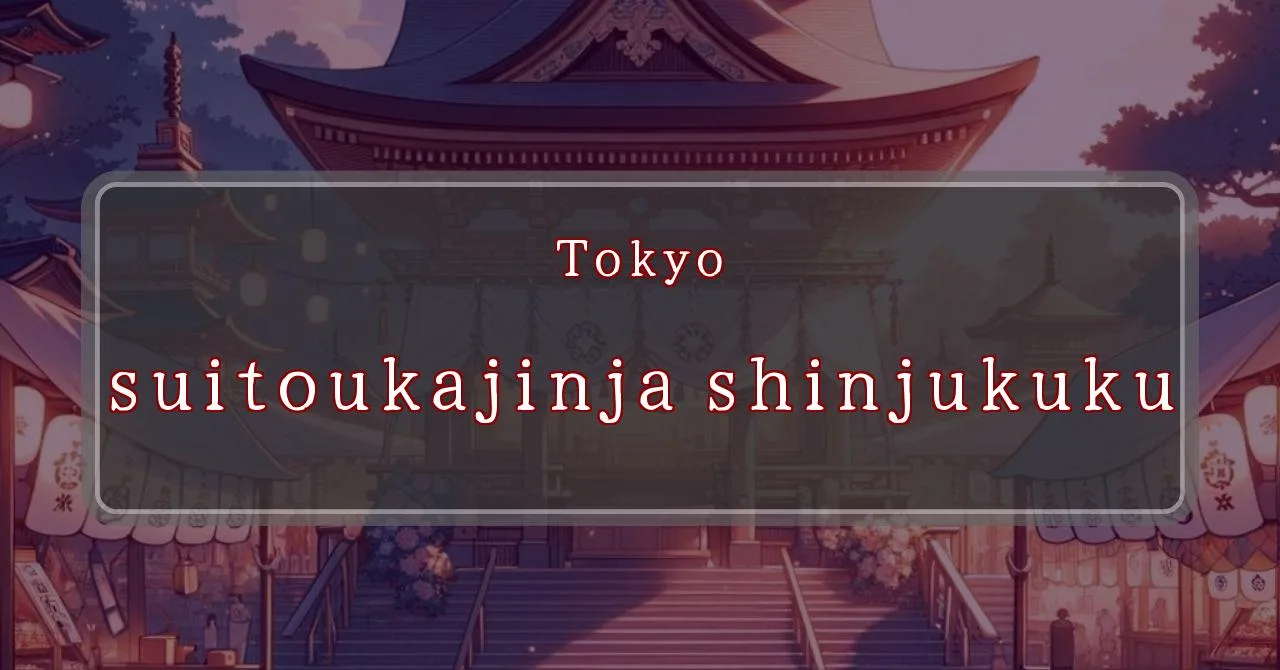Gleaming lanterns illuminate the night at Suwa Shrine
Basic Information
Suwa Shrine is a Shinto shrine located in Shinjuku Ward, Tokyo, Japan. It is dedicated to the deities Takeminakata-no-Mikoto and Yasakatome-no-Mikoto.
- Address: 3-5-43 Nishi-Waseda, Shinjuku-ku, Tokyo 169-0051
- Phone Number: 03-3200-4621
- Access: 2-minute walk from the Nishi-Waseda bus stop, 5-minute walk from Waseda Station on the Tokyo Metro東西線, 10-minute walk from Takadanobaba Station on the JR山手線
- Festival Days: September 9th (Mon), 2024
Main Events and Attractions of the Festival
The Suwa Shrine Festival is a vibrant and lively event that attracts many visitors each year. The main events and attractions of the festival include:
Mikoshi Procession
One of the highlights of the festival is the mikoshi procession, where a portable shrine is carried through the streets of the neighborhood. The mikoshi is decorated with colorful tapestries and streamers, and it is carried by a team of people. The procession is accompanied by music and dancing, and it creates a festive atmosphere.
Bon Odori Dance
Another popular event at the festival is the bon odori dance. This traditional Japanese dance is performed by people of all ages, and it is a great way to experience Japanese culture. The dance is accompanied by music and singing, and it is a fun and lively way to celebrate the festival.
Food Stalls
There are also a number of food stalls at the festival, where visitors can enjoy a variety of Japanese dishes. Some of the most popular foods include yakitori (grilled chicken skewers), takoyaki (octopus balls), and taiyaki (fish-shaped cakes filled with sweet bean paste).
Games and Activities
There are also a number of games and activities for children at the festival. These include things like ring toss, beanbag toss, and goldfish scooping. There is also a petting zoo, where children can interact with animals such as rabbits, goats, and sheep.
Fireworks Display
The festival concludes with a spectacular fireworks display. The fireworks are launched from a nearby park, and they light up the night sky with their vibrant colors. The fireworks display is a beautiful and fitting end to the festival.
Blessings and Deities
Suwa Shrine is dedicated to the deities Takeminakata-no-Mikoto and Yasakatome-no-Mikoto. Takeminakata-no-Mikoto is the god of wind, rain, and agriculture, while Yasakatome-no-Mikoto is the god of thunder and lightning. The shrine is also known for its association with the god Inari, who is revered as the deity of rice and fertility.
- Takeminakata-no-Mikoto: God of wind, rain, and agriculture
- Yasakatome-no-Mikoto: God of thunder and lightning
- Inari: God of rice and fertility
Origin and History
The origins of Suwa Shrine are unclear, but it is believed to have been founded in the early Heian period (794-1185). The shrine was originally located in the village of Suwa, but it was moved to its current location in the 16th century. The shrine has been rebuilt several times over the centuries, most recently in 1935.
- Founded: Early Heian period (794-1185)
- Original location: Village of Suwa
- Moved to current location: 16th century
- Rebuilt: Most recently in 1935
Tips and Notes for Visitors
Here are some tips and notes for visitors to Suwa Shrine:
- The shrine is open daily from 9:00 AM to 5:00 PM.
- Admission is free.
- There is a small museum on the shrine grounds that displays artifacts related to the shrine’s history.
- The shrine is a popular spot for weddings and other ceremonies.
- There are several restaurants and shops in the area surrounding the shrine.
Parking Information
There is a small parking lot on the shrine grounds, but it is often full. There are several public parking lots in the area, but they can also be crowded. It is best to arrive early or use public transportation.
- Small parking lot on shrine grounds (often full)
- Public parking lots in the area (can also be crowded)
- Arrive early or use public transportation
Popular Stalls and Food Carts in Recent Years
| Type of Stall | Description |
|---|---|
| Takoyaki | A staple at Japanese festivals. Characterized by a crispy outside and a creamy inside. |
| Jaga Butter | A simple yet popular snack of hot potatoes lavishly topped with melted butter. |
| Baby Castella | Small castella cakes, sweet and fluffy treats enjoyed by children and adults alike. |
| Grilled Ayu with Salt | Fresh ayu fish grilled whole with salt, a savory taste of Japanese summer. |
| Shaapin | A unique gourmet item influenced by foreign cuisine, with a chewy skin wrapping the filling. |
| Okonomiyaki | A Japanese grilled dish where you often choose your own ingredients for a personalized flavor. |
| Cotton Candy | A fluffy, sweet snack that’s extremely popular with children. |
| Chocolate Banana | A banana coated in chocolate, a fun and visually appealing dessert. |
| Kushiyaki | Various types of ingredients skewered and grilled, an easy-to-enjoy snack. |
| Yakisoba | Fried noodles mixed with a special sauce, a fast food favorite in Japan. |



